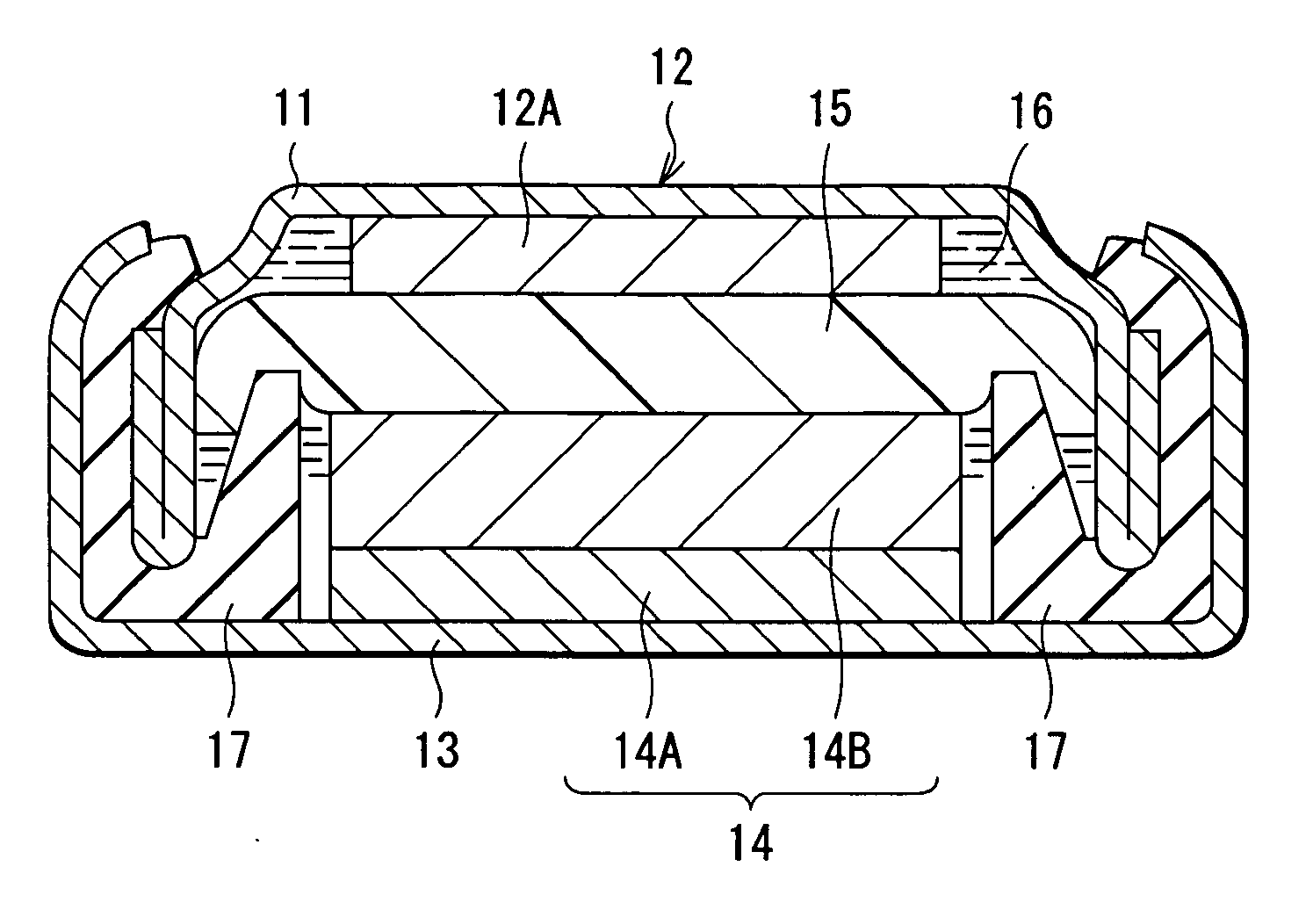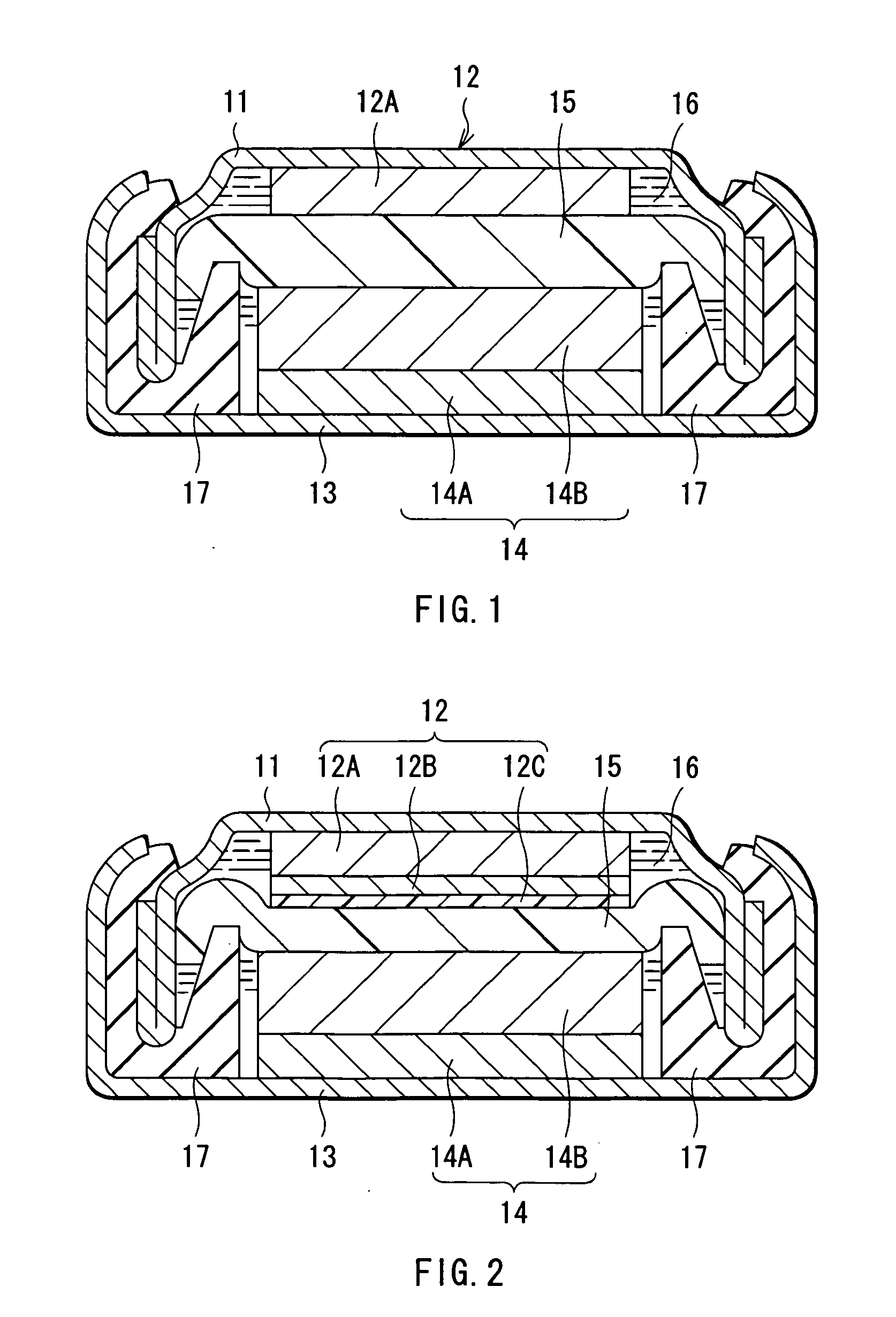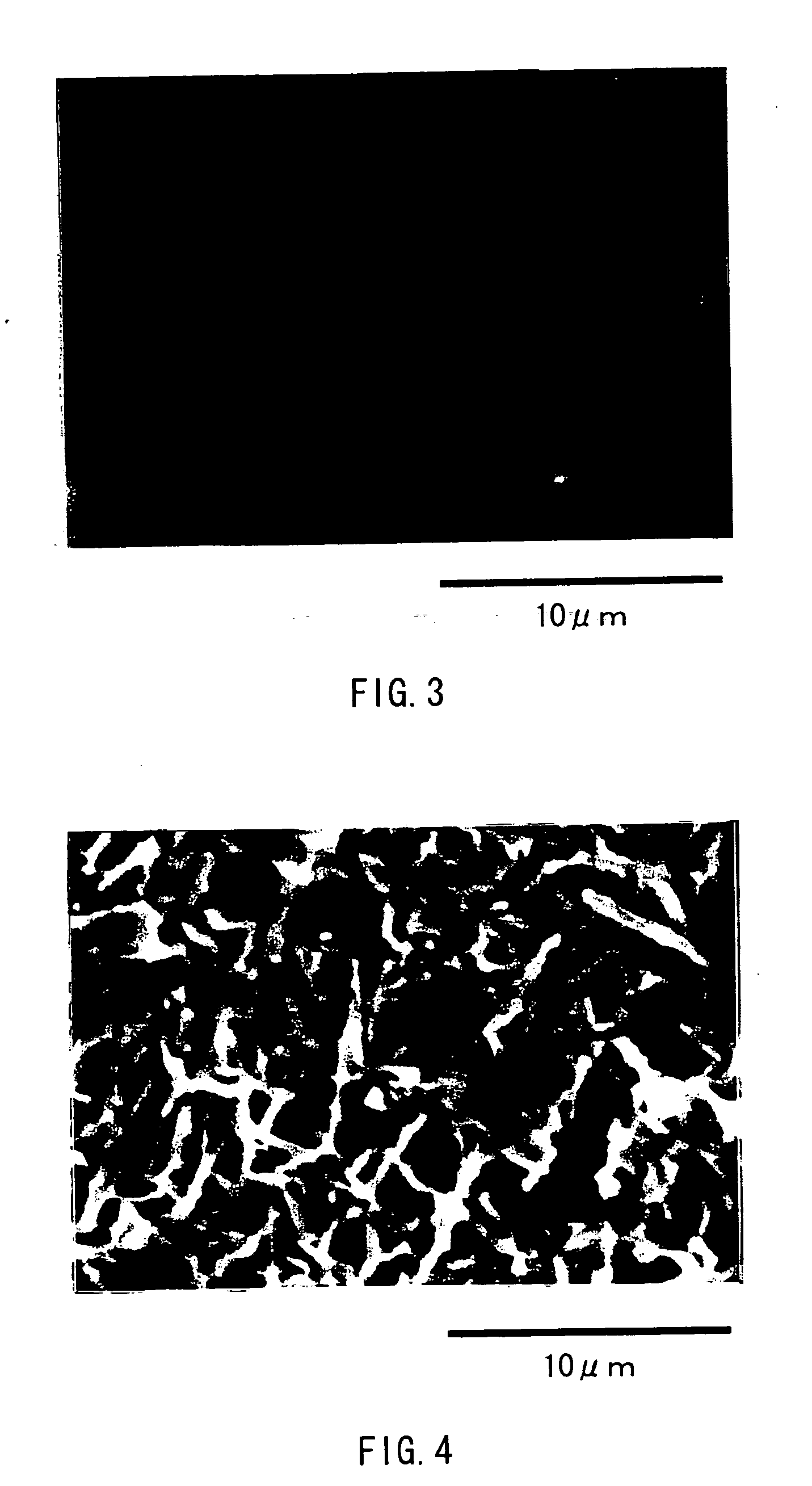Electrolyte, negative electrode and battery
a negative electrode and electrolyte technology, applied in the field of electrolyte, can solve the problems of difficult to put secondary batteries into practical use, deterioration of capacity, and deterioration of capacity, so as to prevent the growth of dendrites, improve battery characteristics, and prevent side reactions.
- Summary
- Abstract
- Description
- Claims
- Application Information
AI Technical Summary
Benefits of technology
Problems solved by technology
Method used
Image
Examples
Embodiment Construction
[0017] Preferred embodiments of the invention will be described in more detail below referring to the accompanying drawings.
[0018]FIG. 1 and FIG. 2 show a structure of a secondary battery according to an embodiment of the invention. FIG. 1 shows a structure at the time of fabrication, that is, before the first (initial) charge and FIG. 2 shows a structure after charge. The secondary battery is a so-called coin type, and comprises a laminate including a disk-shaped anode 12 contained in a package cup 11 and a disk-shaped cathode 14 contained in a package can 13, which is a counter electrode of the anode 12, with a separator 15 in between. Inside the package cup 11 and the package can 13 are filled with an electrolytic solution 16, which is an electrolyte. Edge portions of the package cup 11 and the package can 13 are sealed through caulking by an insulating gasket 17. The package cup 11 and the package can 13 are made of, for example, metal such as stainless or aluminum (Al).
[0019]...
PUM
| Property | Measurement | Unit |
|---|---|---|
| diameter | aaaaa | aaaaa |
| thickness | aaaaa | aaaaa |
| thickness | aaaaa | aaaaa |
Abstract
Description
Claims
Application Information
 Login to View More
Login to View More - R&D
- Intellectual Property
- Life Sciences
- Materials
- Tech Scout
- Unparalleled Data Quality
- Higher Quality Content
- 60% Fewer Hallucinations
Browse by: Latest US Patents, China's latest patents, Technical Efficacy Thesaurus, Application Domain, Technology Topic, Popular Technical Reports.
© 2025 PatSnap. All rights reserved.Legal|Privacy policy|Modern Slavery Act Transparency Statement|Sitemap|About US| Contact US: help@patsnap.com



